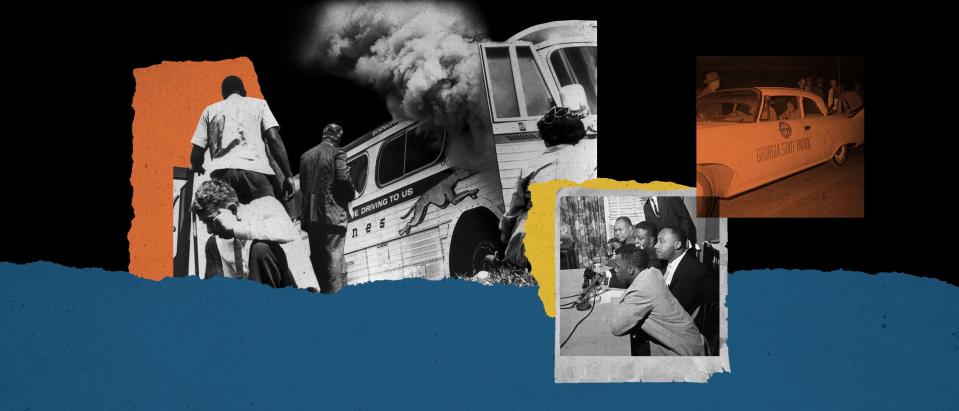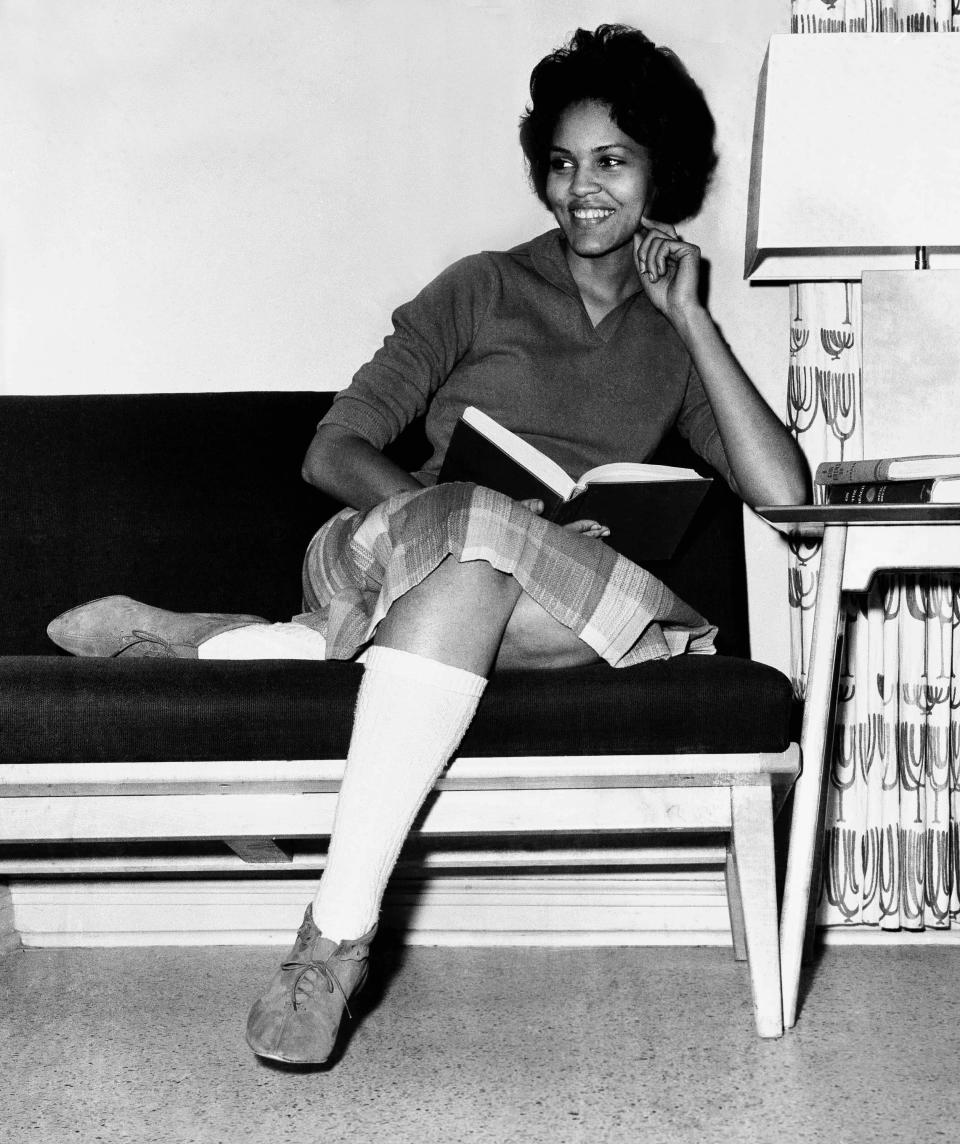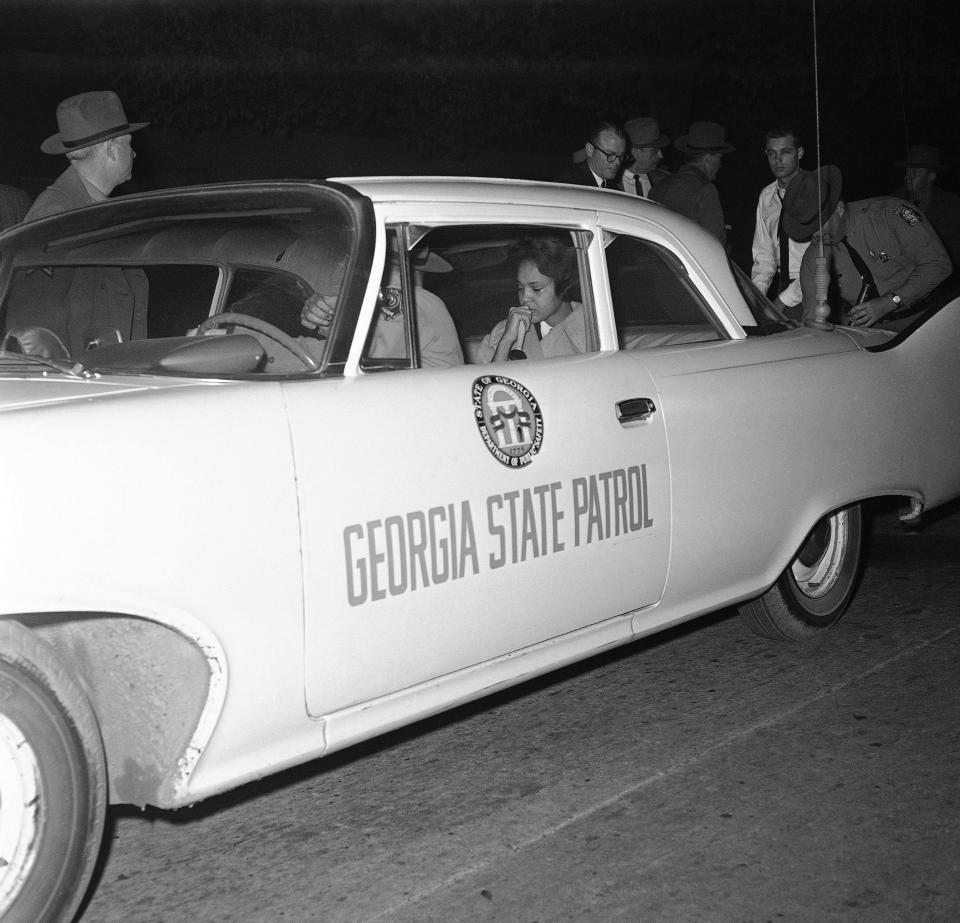This is America: 1961, the year young activists helped change the course of American history

During an Aug. 4, 1857, address on West India Emancipation at Canandaigua, New York, famed abolitionist Frederick Douglass said in his speech, “Power concedes nothing without a demand. It never did and it never will."
This was a statement that Black Americans have intimately understood both then and now given their battle against the horrific nature of American chattel slavery, Jim Crow apartheid laws, mass incarceration and a resurgence of voter suppression laws. They've had to pressure unwilling and often hostile white leaders and lawmakers to enforce their freedoms.
For those of us who were taught American history, it's easy to assume that equality and justice were inevitable and that "the arc of the moral universe is long, but it bends toward justice," as Martin Luther King Jr. once said.
Much of what we learn when it comes to Black history favors polished narratives of good conquering evil, instead of stories that portray complex people.
President Abraham Lincoln freed the slaves. Never mind that he once thought those who were enslaved should be freed and repatriated back to Africa.
Rosa Parks was tired, so she sat on a bus. Never mind that Parks, along with many Black Americans in Montgomery, Alabama, was a seasoned civil rights activist and sexual assault investigator who had pushed for civil rights for years prior to the boycott.
We're taught King had a dream and then Black people were given civil rights. Never mind that when King was assassinated he was planning a Poor People's Campaign, activism that demanded not just civil rights but economic security for Black Americans and other people of color.
In the midst of these stories, we often overlook the work of ordinary people – some of them only children – who took the fight for freedom, justice and equality into their own hands. Often at a huge cost to themselves and their families.
The year 1961 in particular is a masterclass in how vulnerable Black Americans and their allies dared to challenge unjust laws and change U.S. history in ways we're still wrestling with in 2021. For the first time, organizations worked together to coordinate protests, direct activists and focus on voter registration. Young people also organized within their own communities, helping to shift perceptions. At USA TODAY, we're honoring the heroes of that year and what we can learn from their activism today in the multimedia "Seven Days of 1961" project.
“What we're trying to do is do justice to the work of these veterans, to give voice to these veterans,” said USA TODAY national correspondent Deborah Berry, who proposed the project.
I'm Mabinty Quarshie, a politics NOW reporter for USA TODAY. Welcome to this week’s “This Is America” newsletter centered on race and identity and how they shape our lives.
Americans stood up to racism in 1961 and changed history. This is their fight, in their words.
VIDEO: How the civil rights movement exposed the harsh realities of racism in the US
Join USA TODAY to discuss community leaders’ roles in helping fight systemic racism
Defying death’s door
Most, if not all, successful justice movements require intergenerational collaboration. Movements are built by the work of not just experienced activists, but also the energy of the young.
But as Freedom Rider Charles Person notes in his memoir "Buses Are A Comin'," there comes a time when younger generations want their turn to lead the fight for freedom.
In the wake of the Montgomery Bus Boycott and King's leadership, the youth of 1961 "felt it was our time and our turn. We were high school and college students, and we were eager to shake, rattle, and roll the country out of its complacency toward our freedom," Person wrote in his memoir.

During 1961, they would put their lives in danger in ways that jolted the nation's conscience and led to the repeal of hateful laws. Many were willing to face tear-gassing, job loss, bombings, lynching and other forms of torture and death for their beliefs.
In his early 20s, Charles Mason, a member of the Baltimore office of the Congress Of Racial Equality, organized sit-ins in Baltimore and helped desegregate restaurants along U.S. Route 40 in 1961.
Manson told USA TODAY in an interview the fear of retaliation didn't stop him from participating.
“I was always aware of being hurt. ... It wasn't enough to scare me not to go on a demonstration," Manson said.
That same year, another CORE activist, Sylvia Cooper, protested outside a Baton Rouge courtroom with more than 1,500 students. They were tear-gassed by police. She, too, did not let violence stop her.
"When you’re young, you don’t know anything different," Cooper told USA TODAY. "We knew it could happen, but it was just something you would do. It was something you were ready to do.”
SUBSCRIBE: Help support quality journalism like this.
Forcing America to follow its own laws
As a 19-year-old African American college student, Charlayne Hunter-Gault felt the harsh sting of racism when she desegregated the all-white University of Georgia. Although the Supreme Court's Brown v. Board of Education of Topeka decision was the law of the land, it would take young Black students like Hunter-Gault to force schools and colleges to follow the law.
On Jan. 11, 1961, an angry white mob, including members of the KKK, raged outside of Myers Hall, Hunter-Gault's dormitory.
To add insult to the appalling injury Hunter-Gault faced, was the way college administrators responded to the actions of the unruly mob.


Rather than police dispersing the unruly crowd, Hunter-Gault heard a knock at the door. You’re expelled, the dean of students told her, for your own safety, Stephanie Allen reported for USA TODAY.
A silent Hunter-Gault recited Psalm 23 as she was escorted off-campus.
Hunter-Gault, along with fellow African American student Hamilton Holmes, were forced to leave school. (The law clerk who assisted Hunter-Gault's lawyer, Donald Hollowell, was the late civil rights activist Vernon Jordan.)
Five days later, they returned to UGA emboldened by a federal judges' order that they be allowed to continue their education. Hunter-Gault graduated from UGA with a degree in journalism.
When jail is a means to an end
On Jan. 31, 1961, Friendship Junior College students staged a sit-in at McCrory's Five & Dime, a popular lunch counter in Rock Hill, South Carolina, to protest segregated lunch counters.
The Rock Hill sit-in was the start of the "Jail, No Bail” strategy, a civil rights tactic soon adopted by activists across the nation.
Of the 10 people arrested in Rock Hill for trespassing, nine of them refused to post the $100 bail imposed on them. The Friendship Nine, as they were later known, went to jail instead.
Thomas Gaither, one of the Friendship Nine, said the students were afraid of jail but were protected by prisoners who watched over them.
"When you are in jail, you are shut off from society, so you never quite know what’s happening in the outside world," Gaither said.
They were sustained by faith.
"We had faith in ourselves, faith in God, and faith in the nonviolent strategy,” he said.
Their actions later inspired a group of 13 Freedom Riders who tried to desegregate commercial buses in May 1961. They also refused bail after their arrests.
Of the original Freedom Riders, Joe Perkins was the first to be arrested and the first to put the jail, no bail strategy into effect. The goal for many civil rights activists was to fill jail cells with as many people as possible to make segregation a financially untenable practice.
Person wrote in his memoir, "Rock Hill brought the first violence of the journey.” It was in Rock Hill that a young and future Congressman John Lewis was beaten during the Freedom Rides.
They still kept going.
What’s next?
At that same 1857 address on West India Emancipation, Frederick Douglass also said “If there is no struggle there is no progress.”
I continue to see that youthful struggle for civil rights among many activists in justice movements today. There are the millennials and Gen Zers who launched the Black Lives Matter social justice movement. The activists who put their lives on the front line during the global protests around George Floyd's murder.
As Berry, our lead 1961 writer, told me, civil rights activists from 1961 are disappointed to see that issues they fought for in their youth, such as voting rights, are still being fought by a new generation.
“They were very passionate about saying the fight needs to continue," Berry said. "And even if it's not them – they already fought their fight – they trust the younger generation will do that and they were really proud of what young people were doing last year.”
While many of their actions may not be memorialized in Oscar-nominated movies or public school history books, what civil rights veterans did was not in vain.
They're asking you and me not to forget their hard-won struggle for equality. I think that's a worthy goal.
This is America is a weekly take on current events from a rotating panel of USA TODAY Network journalists with diverse backgrounds and viewpoints. If you're seeing this newsletter online or someone forwarded it to you, you can subscribe here. If you have feedback for us, we'd love for you to drop it here.
This article originally appeared on USA TODAY: Young activists in 1961 helped change US history, fuel civil rights

 Yahoo Movies
Yahoo Movies 